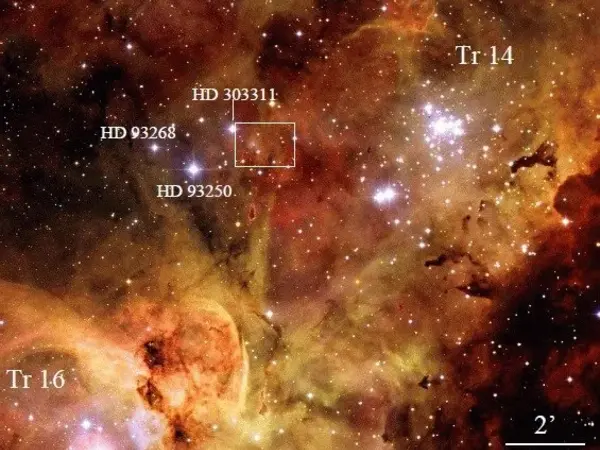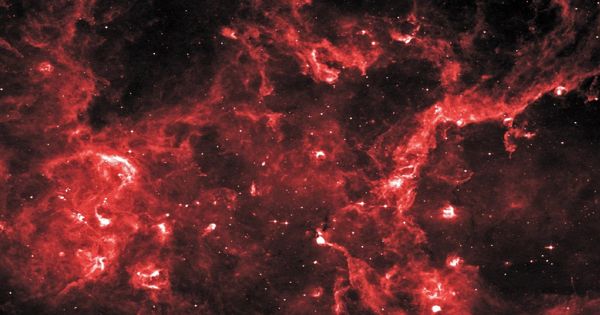HD 93250 is a massive star located in the constellation Carina, approximately 7,500 light-years away from Earth. It is one of the brightest stars in the Carina Nebula region. It is classified as a Wolf-Rayet star, which is a rare type of hot, luminous star with strong stellar winds that have stripped off much of their outer hydrogen envelopes. It is only 7.5 arcminutes from Eta Carinae, and HD 93250 is part of the same loose open cluster Trumpler 16, though it appears closer to the more compact Trumpler 14.
HD 93250 has a very high mass, estimated to be around 80 times that of the Sun, and a high luminosity, around 700,000 times that of the Sun. It is known to be a binary star, but individual spectra of the two components have never been observed, despite the fact that they are thought to be very similar. It is also surrounded by a nebula called RCW 49, which is believed to have been created by the star’s powerful winds interacting with the surrounding interstellar medium.

HD 93250’s physical properties have only been calculated under the assumption that it is a single star. The temperature is approximately 50,000 K, and the luminosity is approximately 1,000,000 L☉. Calculations of mass have revealed discrepancies between spectroscopic and evolutionary models, which may be resolved by examining two separate stars in the system.
HD 93250’s spectral type has been variously assigned as O5, O6/7, O4, and O3. It has been classified as a main sequence star and a giant star at different times. The Galactic O-Star Spectroscopic Survey has used it as the standard star for the newly created O4 subgiant spectral type. Due to its distance and location in the southern hemisphere, HD 93250 is not visible to the naked eye from most populated areas of the world. It is primarily studied by astronomers using telescopes and other advanced instruments.
















